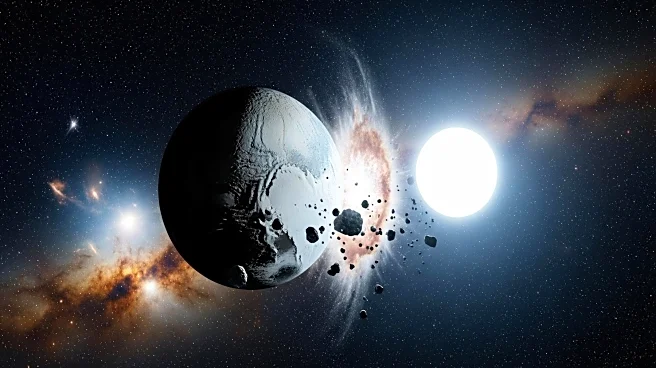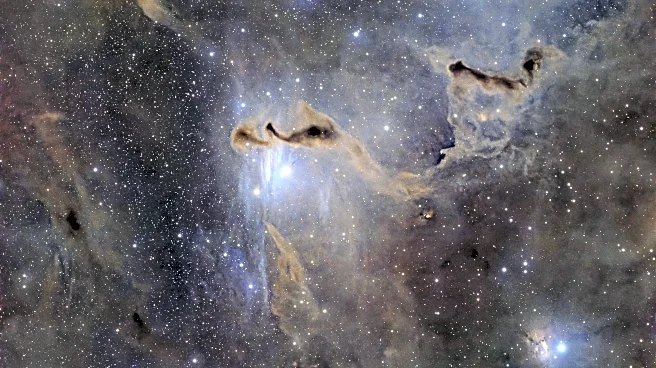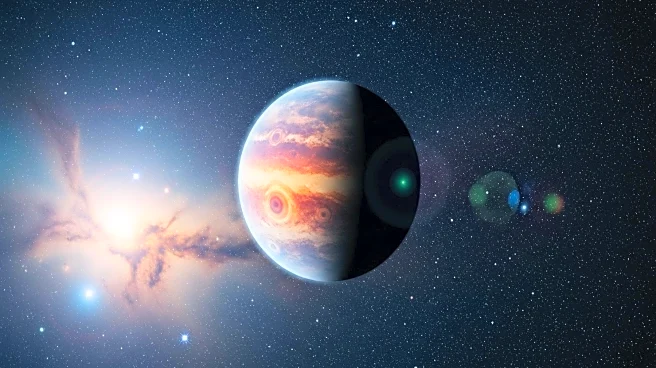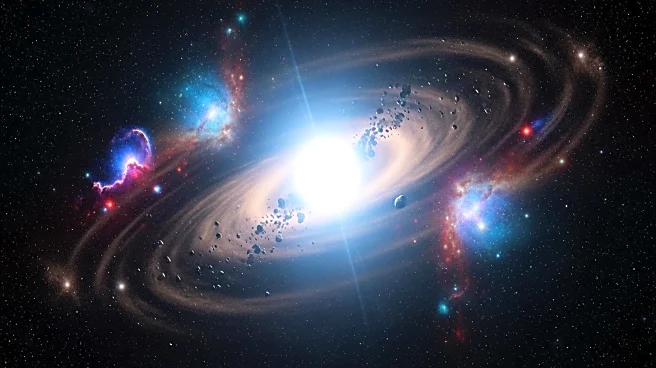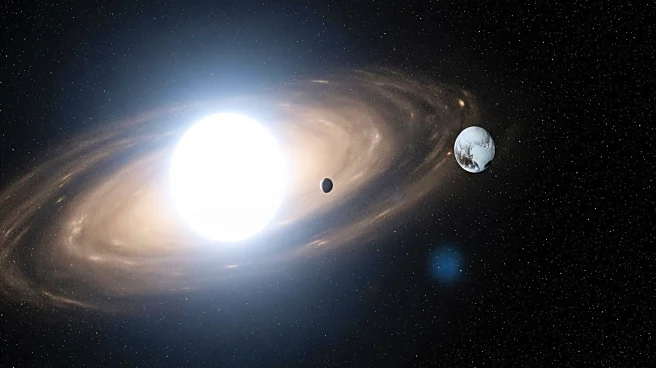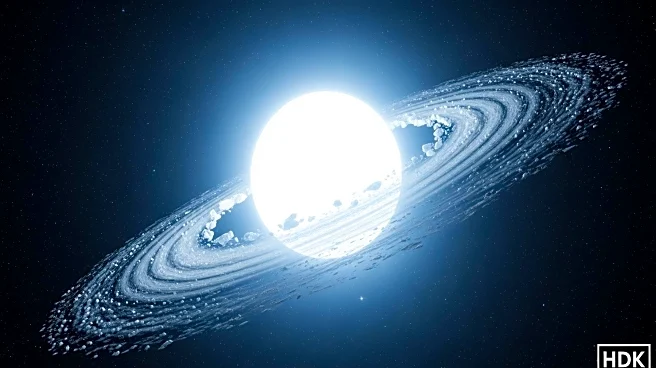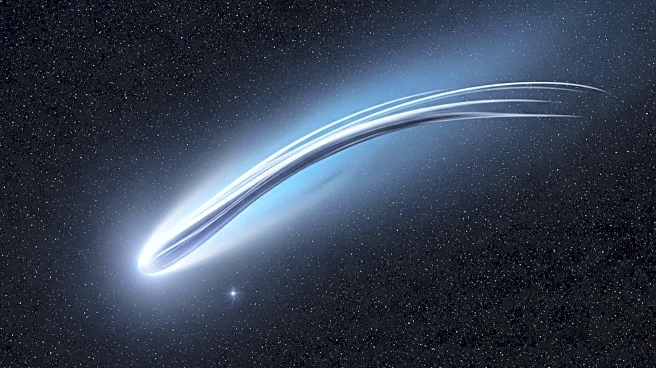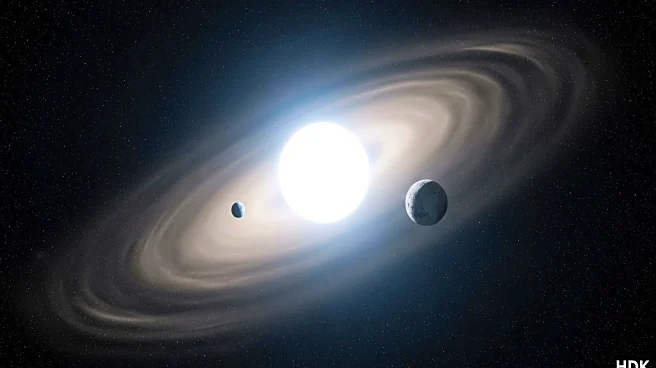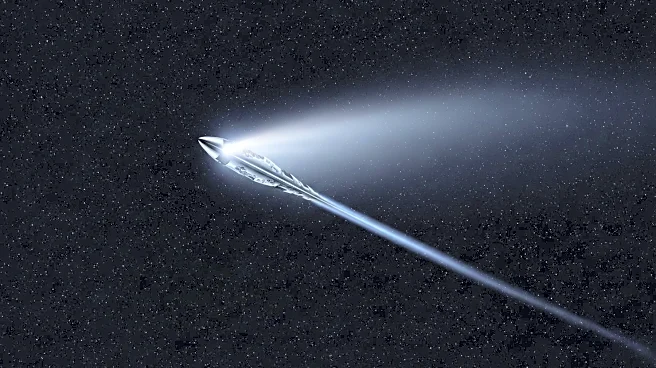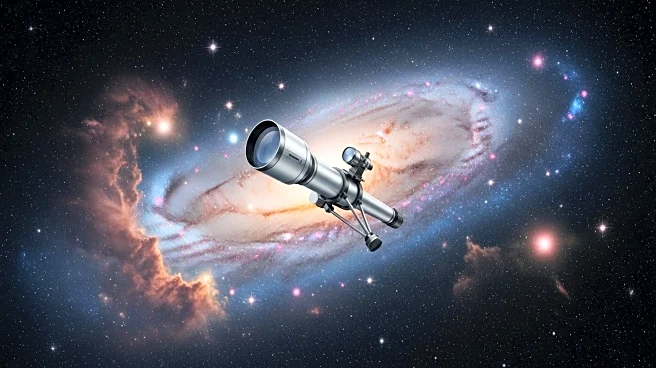What's Happening?
NASA's Hubble Space Telescope has observed a Pluto-like body spiraling into a white dwarf star, marking the first time such an event has been documented. The white dwarf, located 260 light-years away, may have a system similar to our solar system's Kuiper Belt. The discovery was made by analyzing the material falling onto the white dwarf, revealing the presence of elements like carbon, nitrogen, sulfur, and water ice. This suggests that icy bodies in a planetary system's outskirts can survive long after their star has died, providing insights into the future of our solar system.
Why It's Important?
This observation offers a glimpse into the fate of planetary systems after their stars exhaust their fuel. The findings suggest that icy bodies, like those in our solar system's Kuiper Belt, might endure for extended periods, potentially influencing the distribution of water and other elements across the universe. Understanding these processes is crucial for piecing together the history of water on Earth and other planets, as well as predicting the long-term evolution of planetary systems.
What's Next?
Further research will focus on understanding the dynamics of planetary systems as they transition from active stars to white dwarfs. Scientists aim to explore how these systems' outer regions evolve and the role of icy bodies in transporting water and other materials. This could lead to new theories about the formation of habitable environments in the universe and the potential for life beyond Earth.

